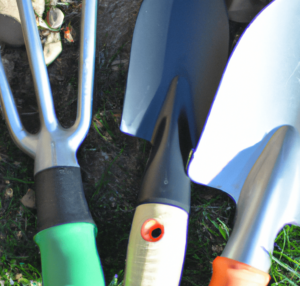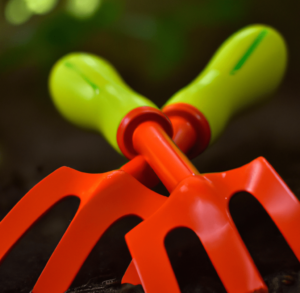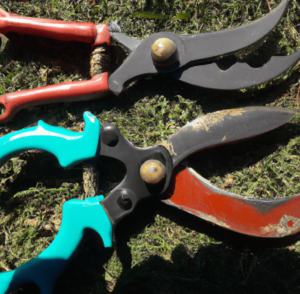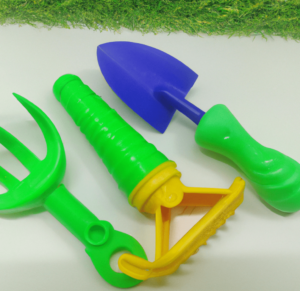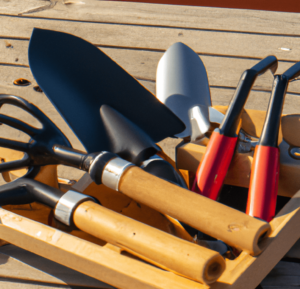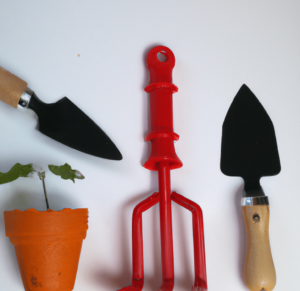For a stunning and healthy garden, it’s crucial to select the appropriate gardening equipment for your soil and environment. The ground and the surroundings can have a big impact on the growth and health of plants, as any seasoned gardener is aware. For instance, moist soil can suffocate roots, whereas dry regions might need additional watering. Understanding the significance of matching the appropriate tools to your soil type and climate is imperative in light of this. We’ll dive into what you need to know about choosing the right garden tools for your soil type and climate!
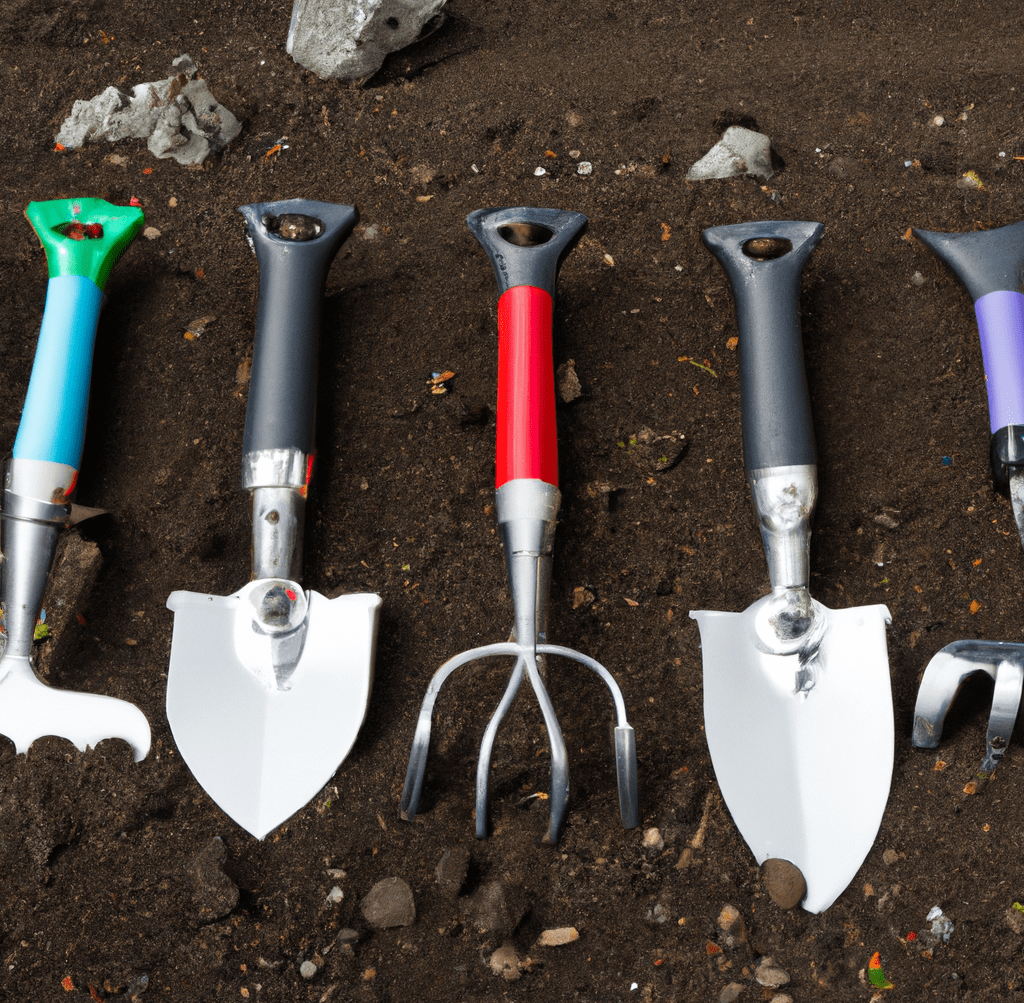
Soil Type
In order to choose the right garden tools for specific tasks, it’s essential to understand your soil type. Before choosing the right garden tools for your soil type and climate, a gardener needs to determine the type of soil in their garden. Soil comes in a variety of varieties, including clay, loam, sand, and silt. It’s essential to use instruments that won’t harm the soil’s structure because wet soil can hinder plant growth and cause the roots to suffocate.
Raised garden beds will help to drain water away from the plant roots, therefore gardeners in wet areas might wish to think about using them. Sandier soil, on the other hand, might be nutrient-poor and is simpler to deal with, but it dries up rapidly. Gardeners with sandy soil might need to supplement it with compost or other organic material to provide their plants with the nutrients they need to grow. You can choose the best gardening equipment for your garden by knowing what type of soil it has, which will result in healthier plants and a more plentiful harvest.
The Different Types of Soil
Choosing the right garden tools for your soil type and climate means first getting to know your soil. The season for gardening as well as plant growth can be impacted by soil type, which varies depending on location and climate.
For example, it’s challenging for roots to develop and grow in clay soil because it is heavy and dense. This type of soil holds water effectively, which is advantageous during the summer when water supplies may be limited. The best soil for gardening is loamy soil, a mix of clay, sand, and silt. It’s rich in nutrients and has good drainage, making it an ideal place for plants to flourish.
On the other hand, nutrient-poor and swiftly draining sandy soil makes it difficult for plants to thrive. In contrast, silt soil feels smooth to the touch and has a water-retention capacity comparable to clay soil. To guarantee optimum plant growth, gardeners must pay particular attention to the root zone and soil type. The first step in selecting the ideal garden tools for your needs is to understand the various types of soil in your garden.
Clay Soil
Although clay soil might be difficult for gardeners to work with, with the correct gardening equipment, it can be transformed into a productive environment for strong plants. If you’re learning about choosing the right garden tools for your soil type and climate and have clay soil, here’s what you need to know
Gardeners should begin by enhancing the soil’s structure by adding organic matter, such as compost or leaf mold, which will aid in bettering soil drainage and aeration. This makes it a great choice for a pollinator garden because it will make the ground more welcoming to pollinators.
When planting in clay soil, it’s crucial to pick plants that are adapted to this particular soil. Clay soil is perfect for growing vegetables like lettuce, beans, and carrots. Sand or gravel can be added to the soil by gardeners to improve drainage and the conditions for root development. The soil will become easier to work with and produce better results for your vegetable gardening or ornamental plants if you invest in gardening tools like a garden fork or a spade.
Sandy Soil
Although sandy soil, a well-draining soil type, might be difficult for some gardeners to work with, with the correct equipment, it can be transformed into a productive environment for strong plants. If you’re choosing the right garden tools for your soil type and climate and have sandy soil enhance the soil’s nutrient content.
Gardeners should start by enhancing the soil structure by adding organic matter, such as compost or well-rotted manure. This is a great choice for a vegetable garden because it will improve the atmosphere in which the plants can develop. The soil should be broken up and made more favorable for plant growth by gardeners by using equipment like a hoe or a cultivator.
When planting in sandy soil, it’s crucial to pick plants that are adapted to the environment. Sandier soil is perfect for growing plants like carrots, radishes, and sweet potatoes. Plants that can withstand dryness are an additional option for gardeners, and they are a great choice for pollinator gardens. Any gardener may create a fruitful and satisfying garden bed with sandy soil if they use the right tools and plants.
Silt Soil
A fertile soil type that can be great for gardening, silt soil also has certain drawbacks. To deal with this soil type after learning about choosing the right garden tools for your soil type and climate, gardeners should begin by selecting the appropriate gardening tools, such as a garden spade or a cultivator. These devices will aid in aerating the soil and fostering a more favorable environment for plant development.
To boost the soil’s nutrient content, the organic matter must be added to the surface, such as compost or manure. It’s critical to choose plants for silt soil that can withstand the soil type’s moisture-retentive characteristics. Silty soil is perfect for growing plants like parsley, garlic, and shallots. Tomatoes and cucumbers are two examples of plants that can profit from silt soil’s ability to retain moisture. Gardeners may maximize silt soil for a productive garden by choosing the correct plants and gardening tools.
Loam Soil
Sand, silt, and clay make up loam soil, the best form of soil for gardening since it is nutrient-rich and well-draining. Fruit trees and vegetable gardens do very well with this kind of soil. Loam soil is advantageous for gardeners since it is simple to work with and requires little effort to enhance if you’re learning about choosing the right garden tools for your soil type and climate. To preserve soil structure and break up compacted soil, gardeners need still to spend money on the correct tools, such as a hoe or garden rake.
Gardeners who use loam soil benefit from a longer growing season and the freedom to plant a wide range of fruits and vegetables. Loam soil is an excellent choice for beginners because it provides the ideal environment for plant growth and doesn’t need a lot of extra labor or care. To increase the soil’s fertility and promote plant growth, gardeners can also add organic materials, such as compost. Loam soil can be a great option for a successful and satisfying garden if used properly and combined with a solid variety of plants.
Tools That Are Best Suited for Each Soil Type
As you learn about choosing the right garden tools for your soil type and climate, here’s what tools are best for each type of soil:
- Garden fork, spade, hoe, and cultivator for clay soil
- Hoe, cultivator, trowel, and garden fork for sandy soil
- Garden spade, cultivator, hoe, and hand trowel for soil with silt
- Garden rake, hoe, spade, and garden fork for loam soil
These tools make it simpler to maintain soil structure, remove compacted soil, and enhance drainage since they are made to operate best in the unique ground conditions of each type of soil.
It’s crucial to think about the plants you’ll be cultivating while selecting garden tools because some are better suited for particular gardening techniques, including growing vegetables or ornamental plants. Purchasing the appropriate tools for your soil type can help you save time and work and ensure that your plant’s roots grow in a healthy manner.
Clay Soil: Tools With a Wide, Flat Blade or Large Head
Due to its density and stickiness, clay soil can be difficult to deal with, especially after significant rain. To make the job easier, gardeners with clay soil can select equipment with a wide, flat blade or a large head. When you’re choosing the right garden tools for your soil type and climate, such as a shovel or a garden fork, are made to aerate and break up the compacted soil, allowing it to dry out more quickly.
Additionally, they can aid in preventing soil compaction and enhancing drainage. Avoid using instruments that can harm plant roots while working with clay soil, such as a tiller, which can compact the soil and prevent water and nutrient intake. Instead, gardeners should choose manual tools like a hoe or a cultivator that provide more exact soil manipulation. Workers with clay soil should be careful not to compact the soil by overworking it, as this can lower the soil’s nutrient content. Even with clay soil, gardeners can have a flourishing garden by using the right equipment and taking the necessary precautions.
Sandy Soil: Tools With a Sharp, Pointed Tip
Although sandy soil drains quickly and is simple to work with, it can be difficult to keep it moist and maintain nutritional levels. To make working in the soil easier, gardeners with sandy soil should select equipment with a sharp, pointed tip. The soil can be made easier to work with by using equipment like a garden fork or a trowel. When you’re learning about choosing the right garden tools for your soil type and climate, it’s crucial to avoid utilizing instruments that can erode soil or harm the soil structure when dealing with sandy soil.
Gardeners should select equipment like a hand rake or a cultivator that enables more exact soil manipulation. These instruments can aid in breaking up any compacted soil and enhancing the soil’s nutrient content. Gardeners should also add organic matter, such as compost or old manure, to sandy soil to increase its nutrient content and water retention in order to ensure healthy plant growth. Even on sandy soil, gardeners can have a flourishing garden with the necessary equipment and care for the land.
Silt Soil: Tools With a Curved or Serrated Edge
Although silt soil is rich and has good drainage, when it rains, it can become compact and soggy. To make working in the soil easier, gardeners with silty soil should select tools with curved or serrated edges. A garden spade or cultivator, as you’re choosing the right garden tools for your soil type and climate for example, can aid in breaking up any compacted soil and enhancing drainage. Gardeners who work with silt soil should be careful to avoid compaction and low nutrient content by not overworking the soil. To prevent hurting plant roots, pick equipment that enables more exact soil manipulation, like a hand trowel or a rake.
Gardeners should make sure there is adequate drainage and refrain from overwatering in silt soil in order to sustain healthy plant growth. The water retention and nutrient content of the soil can both be improved by adding organic matter, such as compost or leaf mold. Even with silt soil, gardeners can have a flourishing garden by making the appropriate choices and exercising sufficient care.
Loam Soil: Tools That Are Versatile and Can Adapt to Different Soil Types
Sand, silt, and clay are all present in loam soil, which is a balanced soil that is simple to work with. There are many tools available to gardeners with loam soil, but it’s crucial to pick ones that can work in a variety of soil conditions, particularly in times of drought or heavy rain. Garden hoes and cultivators are adaptable tools that can be employed in many types of soil if you’re learning about choosing the right garden tools for your soil type and climate. These tools can aid in cultivating the soil for planting, weeding the area, and loosening the soil.
Another helpful tool for leveling the soil and removing trash is a garden rake. Gardeners need to make sure that loam soil is well drained and that water is retained in order to promote healthy plant growth. Compost or aged manure can be added to the soil to assist increase its organic matter content and water retention. Gardeners can take pleasure in a flourishing garden even during times of excessive rain or drought by using adaptable tools and taking sufficient care. Both novice and expert gardeners should consider loam soil because it is the best soil type for both vegetable gardens and fruit gardens.
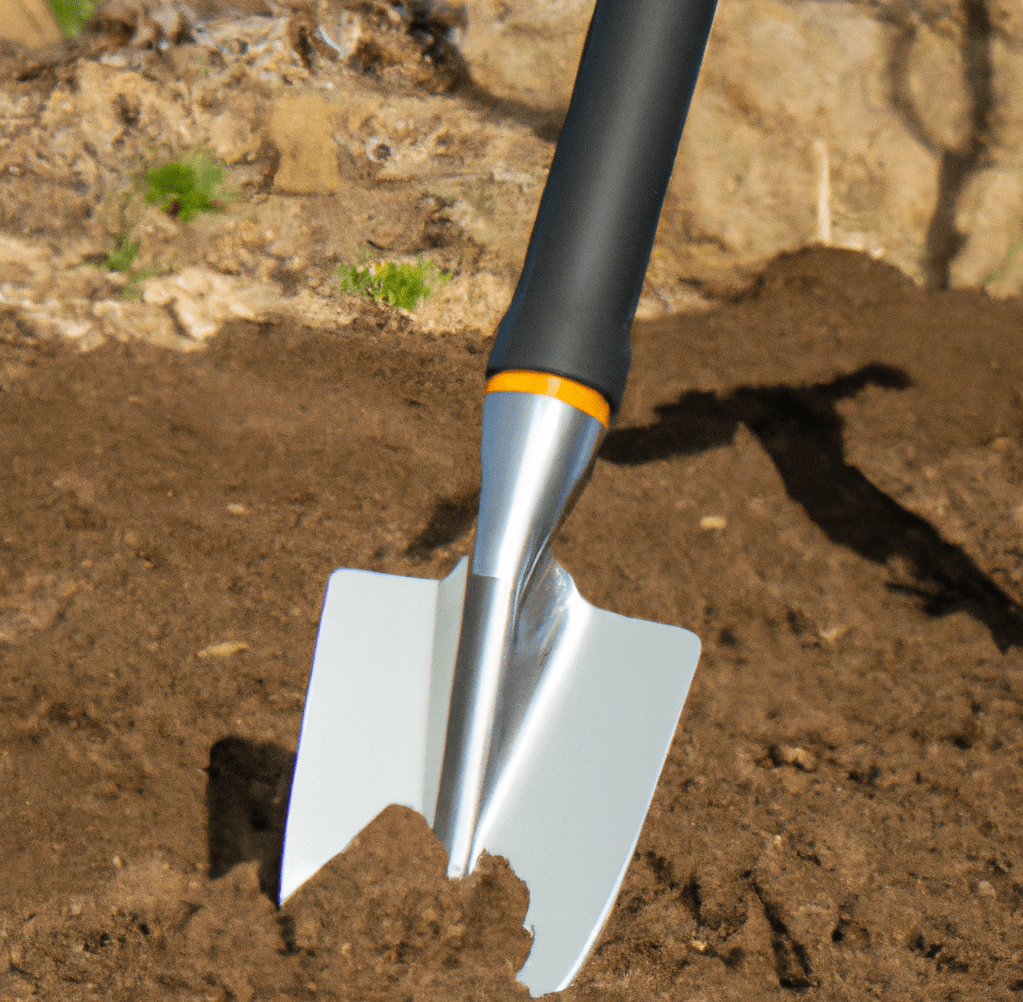
How to Determine Your Soil Type
As you learn about choosing the right garden tools for your soil type and climate, here’s how to determine the type of soil you have:
- The Squeeze Test: Squeeze a bunch of dirt firmly in your hand. You probably have clay soil if the soil compacts tightly into a ball and keeps its shape even after being released. You might have sandy soil if it crumbles in your palm when you open it. Loam dirt is most likely present if the soil gathers into a loose ball that breaks apart when touched.
- Container Test Shake: a jar full of soil and water erratically. Give the jar some time to rest, preferably overnight. The soil’s various layers will become apparent as the soil particles settle. Organic material will be the first layer, then clay, silt, and sand.
- Soil Kit: Purchase a soil test kit from a garden center or online retailer for the pH test. You can use the kit’s pH reading of your soil to assist you to choose the plants that will grow well in your garden.
These techniques allow gardeners to identify their soil type, choose the right tools, and take care of their plants. It’s crucial to keep in mind that different regions of your garden may have different soil kinds, so it’s a good idea to test many places to obtain a full picture of your soil type.
Climate
When choosing the right garden tools for your soil type and climate, the climate is a crucial consideration in addition to soil type. Consider the following climate-related factors:
- Seasonal Changes: Different gardening gear and methods are needed for different gardening seasons. For instance, you could want equipment in the summer to assist you to deal with the heat and the drought. You might need tools in the winter to get rid of snow and ice. You may select the ideal tools for your garden by being aware of the special requirements of each season.
- Vegetable Gardens: To help you plant, harvest, and take care of your crops, vegetable gardens need specific tools. You may prepare the soil, plant seeds, and manage pests with the use of tools like trowels, cultivators, and pruners.
- Fruit Trees: To help you prune, harvest, and take care of your trees, you’ll need specific tools. Fruit pickers, pruning saws, and loppers are all necessary instruments for maintaining fruit trees.
- Essential Tools: It’s a good idea to start with a basic collection of tools that can be used for a variety of gardening jobs if you’re a beginner. Find a trowel, hand fork, pruner, and cultivator in the set. You can expand your inventory of specialist tools as you gain experience.
You may select the ideal gardening tools by taking into account the particular requirements of your garden and the regional climate. No of your level of gardening expertise, choosing the appropriate tools may help you create a stunning and fruitful garden.
How Climate Can Affect Tool Selection
When choosing the right garden tools for your soil type and climate, you might be significantly influenced by your local climate. Here are some ways that the environment may influence the choice of tools:
- Temperature: For various temperature ranges, different tools are required. Row covers and plant blankets are products that may be necessary for colder locations to protect your plants from frost damage. You might require equipment like irrigation systems and shade fabric in hotter climates to assist control the temperature and prevent heat exhaustion.
- Moisture: The amount of moisture in the ground is influenced by climate, and this might have an effect on the health of your plants. To make sure that your plants receive adequate water in dry conditions, you might need equipment like soaker hoses and drip irrigation systems. To avoid waterlogging and root rot in locations with heavy rainfall, you might need equipment like rain barrels and drainage systems.
- Wind: Wind can also influence the choice of tools, especially in regions that are subject to significant gusts. In windy areas, you might require equipment like supports and trellises to support and shield your plants from harm.
You can make the best tool selections to ensure a healthy and fruitful growing season by being aware of how the climate affects your garden. You can set up your garden for success and take pleasure in a plentiful harvest by choosing tools that are suitable for your local conditions.
Tools That Are Best Suited for Different Climates
The best tools for your garden will depend on your soil type as well as the environment where you live. As you’re choosing the right garden tools for your soil type and climate, here are some items that work best in various climates:
- Frigid Climates: In cold climates, longer-handled tools might provide more leverage. Long-handled hoes, rakes, and shovels help ease the strain on your back and facilitate work in cooler climates.
- Hot Climates: In hot climates, it is advised to use tools with flexible and pleasant handles. These tools improve grip in sweaty circumstances and lessen hand fatigue. It may be more pleasant to use tools with padded handles for extended periods of time.
- Wet Climates: Tools made of materials that resist rust are crucial in wet climates where there is a lot of moisture. Tools made of coated steel or stainless steel are advised since they can endure dampness and keep from rusting. These tools might need less upkeep and last longer.
- Arid Climates: The ideal tools for dry climates are those made of long-lasting and sturdy materials. Look for tools that are constructed from sturdy materials that won’t fracture or become brittle. Metal tools are a fantastic option because they are stronger and less likely to break.
You can make sure that your tools last longer and perform better by choosing ones that are suitable for your area’s climate. Remember that different climates present different obstacles and that the success of your garden can be greatly impacted by your choice of tools.
How to Determine Your Climate
Identifying your local climate is the first step in choosing the right garden tools for your soil type and climate. Checking online weather sites or getting in touch with your local weather bureau are also simple ways to find this information. In order to choose the right tools for your gardening needs, it is crucial to understand the distinctive characteristics of your climate, such as temperature, rainfall patterns, and wind patterns. You may make your gardening experience more fun and productive by using tools that are made for the particular climate where you reside.
Bottom Line: Choosing the Right Garden Tools for Your Soil Type and Climate
You need to know about your soil type and climate whether you’re choosing the best garden tools for children or beginners. When choosing garden equipment, it’s crucial to take the soil type and climate into account to make sure they are appropriate for the task at hand. Gardeners can safeguard the health of their plants, pollinators, and other garden creatures as well as the success of their vegetable gardening efforts by using the right tools. By advising readers to take into account their soil type and climate while choosing gardening tools, they may improve their gardening success and help their gardens thrive.
Choosing the Right Garden Tools for Your Soil Type and Climate FAQs
How crucial is it to select the appropriate gardening tools for the soil and climate?
To ensure a beautiful and healthy garden, it is essential to choose the right gardening tools for your soil and location. Understanding the relevance of corresponding suitable equipment to your soil type and environment is crucial. The ground and surroundings can have a significant impact on the growth and health of plants.
How can I select the appropriate gardening equipment for my soil type?
It’s critical to comprehend your soil type in order to select the appropriate garden tools for particular activities. A gardener must identify the type of soil in their garden before selecting the appropriate gardening tools for their soil type and environment. There are several different types of soil, including clay, loam, sand, and silt. Understanding the different types of soil in your garden is the first step in choosing the best gardening tools for your requirements.
What are the many soil types?
Clay, loam, sand, and silt are among the several types of soil. The best time of year for gardening as well as plant growth can be determined by soil type, which varies depending on location and climate.
How can my clay soil be made better for gardening?
Gardeners should begin by strengthening the soil’s structure by adding organic matter, such as compost or leaf mold, which will enhance soil drainage and aeration, in order to make clay soil healthier for gardening. It’s important to choose plants that are suited to this particular soil while planting in clay soil. To enhance drainage and the environment for root development, add sand or gravel to the soil.
How may my sandy soil be made better for gardening?
Gardeners should begin by strengthening the soil structure by adding organic matter, such as compost or well-rotted manure, to sandy soil in order to make it better for gardening. Through the use of tools like a hoe or a cultivator, the soil should be broken up and made more conducive for plant growth. It’s important to choose plants that are adapted to the area while planting in sandy soil.
How can I make my sand-like soil better for gardening?
Gardeners could start by choosing the proper gardening tools, such as a garden spade or a cultivator, which will help aerate the soil and create a more suitable environment for plant development, in order to enhance silt soil for gardening. Organic matter, such as compost or manure, must be applied to the soil’s surface in order to increase its nutrient content. It’s crucial to select plants for silt soil that can tolerate the properties of the soil type that retain moisture.
What equipment is best for clay soil?
To make the process easier, gardeners with clay soil can choose equipment with a wide, flat blade or a large head. In addition, they should use manual equipment like a hoe or a cultivator rather than a tiller, which can compact the soil and allow more precise soil manipulation.
What implements are appropriate for sandy soil?
Gardeners with sandy soil should choose equipment with a pointed, sharp tip. In order to improve the soil’s nutrient content and water retention, they should avoid using tools that can erode it or damage its structure. A hand rake or a cultivator that allows for more precise soil manipulation is the kind of tool that gardeners should choose.
What equipment do I need for silt soil?
Tools with curved or serrated edges, such a garden spade or cultivator, are best for gardeners with silty soil. They should check for sufficient drainage, avoid overwatering, and add organic matter to the soil to increase its capacity to retain water and its nutrient content. In order to avoid compaction and low nutritional content, they should also avoid overworking the soil.
What equipment do I need for loam soil?
Gardeners with loam soil should choose versatile tools, such as garden hoes and cultivators, that can function in a variety of soil conditions, especially during periods of drought or heavy rain. A garden rake can be used to level the soil and remove the rubbish. To encourage healthy plant growth, gardeners must ensure that loam soil has good drainage and water retention. To do this, they can add compost or aged manure to the soil to boost its organic matter content and water retention.
How can I tell what kind of soil I have?
There are numerous methods for figuring out what kind of soil you have. The squeeze test entails tightly compressing a mass of dirt in your hand and watching how it responds. In the container test, soil and water are placed in a jar, which is shaken to reveal the layers of soil particles. For the pH test, you can also buy a soil test kit from a garden center or internet merchant.


